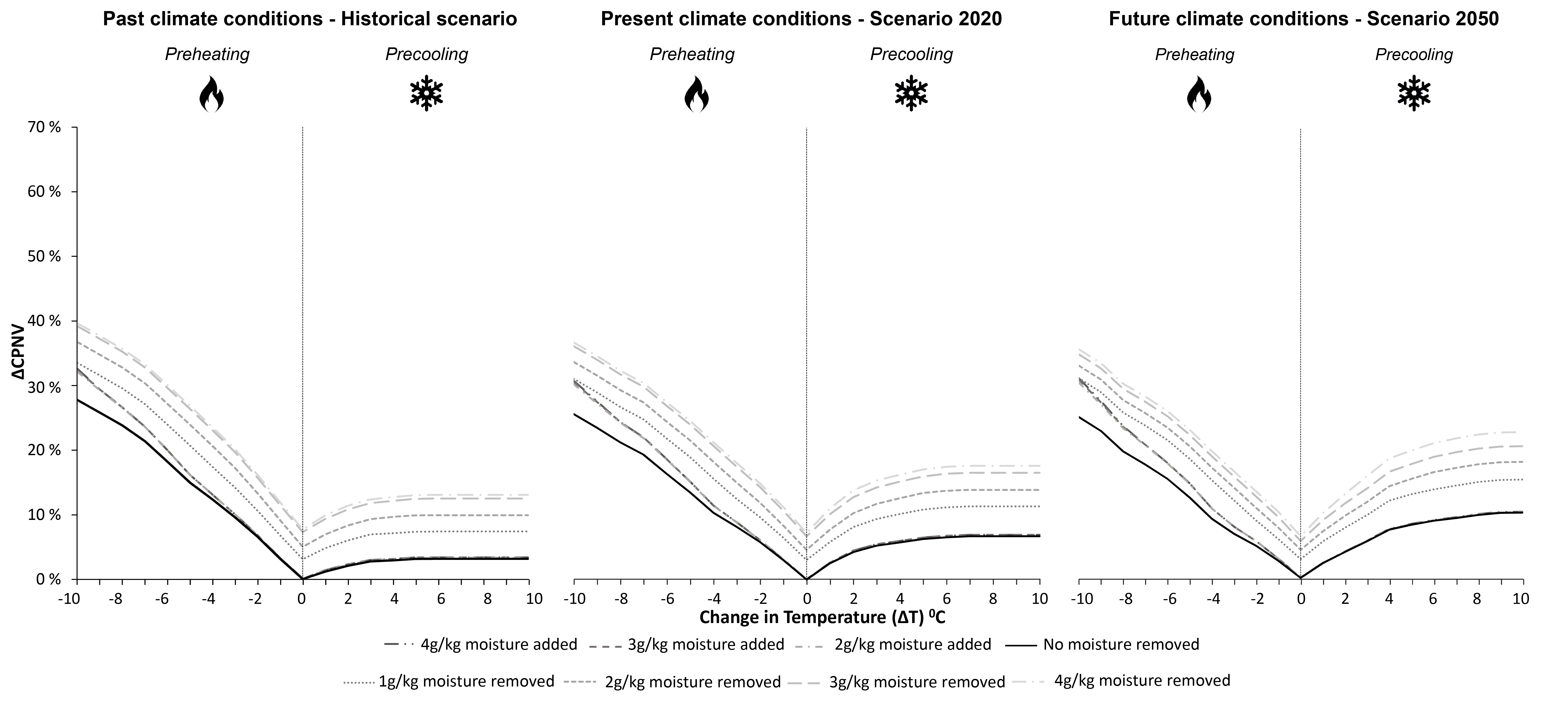Downloads
DOI:
https://doi.org/10.7480/jfde.2019.2.3830Keywords:
Natural ventilation, Building Façade, Climate changeAbstract
Due to the rapid development of super insulated and airtight buildings, the energy requirement for mechanical ventilation is becoming more and more dominant in today’s highly efficient buildings. In this scenario, natural ventilation has the potential to reduce energy use for buildings while maintaining ventilation rates that are consistent with acceptable indoor air quality. The increase in air temperature and frequency of extreme weather events (e.g. heavy rains, heat and cold waves) due to climate change will alter future outdoor boundary conditions and consequently the potential for natural ventilation in buildings. Therefore, to respond to the fluctuations in outdoor boundary conditions, the building envelope should become more and more dynamically responsive. In that sense, the façade plays an important role by regulating indoor comfort based on outdoor environmental conditions. This paper presents a methodological approach to investigate the potential of natural ventilation through the façade in office buildings in present and future climate conditions. It reviews technologies and strategies that maximise the use of natural ventilation in office buildings located in six selected different European climates. Numerical analyses were conducted, considering outdoor air temperature and humidity. Integrated façades with hybrid systems and strategies is one of the key solutions for increasing the potential of natural ventilation. The results showed that a hybrid solution with low-pressure drop heat recovery had the greatest potential to maximise the possibilities of low energy façade integrated ventilation.
How to Cite
Published
Issue
Section
License
Copyright (c) 2021 Nejmia Ali Mohammed, Gabriele Lobaccaro, Francesco Goia, Gaurav Chaudhary, Francesco Causone

This work is licensed under a Creative Commons Attribution 4.0 International License.
Authors or their institutions retain copyright to their publications without restrictions.
References
ASHRAE. (2009). Chapter 9: Thermal Comfort. In R. a.-). ASHRAE (American Society of Heating, ASHRAE Handbook-Fundamentals. Atlanta, GA.
ASHRAE. (2013). Standard 55: Thermal Environmental Conditions for Human Occupancy. Retrieved from ASHRAE (American Society of Heating, Refrigerating and Air-Conditioning Engineers): https://www.ashrae.org/resources–publications/bookstore/
Barclaya, M. S. (2012). The natural ventilation performance of buildings under alternative future weather projections. Building Serv. Eng. Res. Technol. 33,1, 35-50.
Belcher, S. H. (2005). Constructing design weather data for future climates. Building Services Engineering Research and Technology 26 (1), 49-61.
Berglund, L. G. (1998). Comfort and Humidity. ASHRAE Journal 40 (8), 35–41.
Causone, F. (2016). Climatic potential for natural ventilation. Architectural Science Review, 59(3), 212-228. doi:10.1080/00038628.2015.1043722
Fountain, M. E. (1999). An Investigation of Thermal Comfort at High Humidities. ASHRAE Transactions 105 (2), 94–103.
Givoni, B. (1969). Man, Climate and Architecture. Amsterdam: Elsevier.
Heiselberg, P. (2002). Principles of Hybrid Ventilation. Denmark: Aarhus University Center.
IPCC Data Distribution Centre. (n.d.). HadCM3 climate scenario data download page. Retrieved February 18, 2018, from http://www.ipcc-data.org/sres/hadcm3_download.html
Kottek, M., Grieser, J., Beck, C., Rudolf, B., & Rubel, F. (2006). World Map of the Köppen-Geiger climate classification updated. Meteorologische Zeitschrift, 15, 259-263. Retrieved from https://doi.org/10.1127/0941-2948/2006/0130
Perino, M. (. (2008). State-of-the-art Review : Vol. 2A. Responsive Building Elements: ANNEX 44 : Integrating Environmentally Responsive Elements in Buildings. Aalborg University, Aalborg: Department of Civil Engineering,. Aalborg,Denmark: Renew. Sustain. Energy Rev.
Sustainable Energy Research Group - University of Southampton. (2019, September 27). Climate Change World Weather File Generator for World-Wide Weather Data – CCWorldWeatherGen. Retrieved from http://www.energy.soton.ac.uk/ccworldweathergen/
Taveres-Cachat, E., Bøe, K., Lobaccaro, G., Goia, F., & Grynning, S. (2017). Balancing competing parameters in search of optimal configurations for a fix louvre blade system with integrated PV. Energy Procedia, 122, 607-612. doi:10.1016/j.egypro.2017.07.357
Taveres-Cachat, E., Lobaccaro, G., Goia, F., & Chaudhary, G. (2019). A methodology to improve the performance of PV integrated shading devices using multi-objective optimization. Applied Energy, 247 , 731-744.
U.S. Department of Energy’s Building Technologies Office, National Renewable Energy Laboratory. (2019, September 27).
Weather Data Sources. Retrieved from EnergyPlus database: http://energplus.net/weather
Walker, C. E. (2006). Methodology for the Evaluation of Natural Ventilation in Buildings Using a Reduced-Scale Air Model. PhD Thesis, MIT, MA, USA.
World Energy Council (WEC) (2013). (n.d.). World Energy Resources 2013 Survey. London, UK: World Energy Council.
Wyon, D. P. (2006). Experimental Determination of the Limiting Criteria or Human Exposure to Low Winter Humidity Indoors (1160-RP). HVAC&R Research 12 (2), 201–213.
